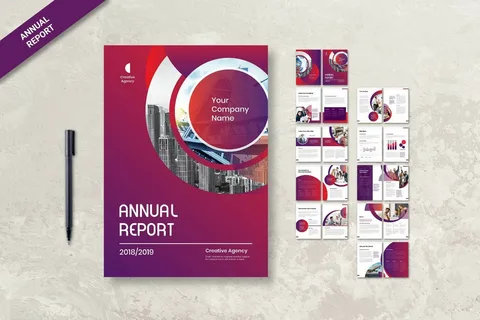Why Annual Report Design Really Matters

In today’s data-driven and highly visual business world, annual report design has become more than just a regulatory requirement—it’s a strategic branding opportunity. When done well, your annual report becomes a powerful communication tool that reflects your organization’s performance, values, and future direction. It is a chance to tell your company’s story in a compelling, polished format that builds trust with stakeholders and enhances corporate credibility.
Whether you’re a growing startup or an established enterprise, the design of your annual report plays a vital role in how your achievements are perceived. It’s not just about numbers—it’s about narrative. Here’s why investing in strong annual report design can elevate your brand presence and leave a lasting impression.
1. First Impressions Count
Before diving into figures and charts, your stakeholders—be they investors, clients, or internal teams—will encounter the visual elements of your annual report. This initial interaction forms their first impression. A clean, consistent, and visually appealing design builds trust and sends a message of professionalism and attention to detail.
A poorly designed report, on the other hand, can suggest carelessness, which could translate into doubts about how seriously you take your financial or strategic performance. In essence, design sets the tone for how your content will be received.
2. Transforming Data into Insight
Annual reports are packed with data: financial statements, performance metrics, strategic goals, and more. But raw data alone rarely tells a compelling story. Through good design, complex information can be translated into digestible visuals—think charts, infographics, timelines, and custom illustrations.
Well-designed visual aids not only make the content easier to understand but also improve retention and engagement. Readers should walk away not just knowing your numbers, but also understanding what they mean for your company’s growth and mission.
3. Storytelling for Stakeholder Engagement
Numbers matter, but stories connect. Annual report design allows you to blend facts with human interest—whether that’s through highlighting employee achievements, showcasing customer testimonials, or illustrating community impact initiatives.
This narrative approach makes your report resonate emotionally, ensuring stakeholders are more than just informed—they’re inspired. From layout choices to image selection and typography, every design element contributes to reinforcing your message and creating a cohesive narrative.
4. Strengthening Brand Identity
Your annual report should be an extension of your brand. From color schemes and typography to tone of voice and image style, your report is an opportunity to reinforce brand consistency. This design alignment strengthens recognition and makes your message more memorable.
More than that, consistent branding across all company communications—including your annual report—enhances your credibility and positions your business as a reliable, professional entity. It reminds stakeholders that your brand is unified, strategic, and future-focused.
5. Digital and Print Versatility
Modern annual report design goes beyond traditional printed formats. With the rise of digital-first communication, many companies are now delivering their reports as interactive PDFs, microsites, or even multimedia presentations.
Designing with digital in mind allows for clickable navigation, embedded video, and other interactive features that elevate user experience. At the same time, a good designer ensures that the report remains equally effective when printed—making it versatile and impactful across formats.
6. Compliance Meets Creativity
Some might argue that annual reports are bound by rigid compliance requirements. While that’s true to an extent—especially in regulated industries—it doesn’t mean creativity is off-limits. In fact, working within boundaries can drive more innovative solutions.
Smart annual report design finds ways to present required information while keeping the reader engaged. It balances clarity with creativity, ensuring you meet all compliance requirements and keep your audience interested.
7. Environmental and Social Reporting
Today’s stakeholders expect more than just financial performance—they’re looking for environmental, social, and governance (ESG) transparency. Including these elements in your annual report, and designing them in a way that underscores your values, can strengthen your brand image and show that you’re aligned with modern ethical standards.
Design plays a key role in spotlighting your sustainability efforts, community outreach, diversity policies, and more. Dedicated sections with strong visuals and thoughtful copy can significantly enhance stakeholder trust.
Final Thoughts
Your annual report is more than a document—it’s a statement of your organization’s identity, goals, and achievements. A well-designed annual report not only informs but also inspires, building trust, showcasing growth, and creating meaningful stakeholder engagement.
At pepperit, we specialize in crafting compelling, visually-driven annual report designs that help brands communicate their stories with clarity and impact. Whether you’re preparing your first report or your fiftieth, our design expertise ensures your message is both powerful and professionally delivered.



